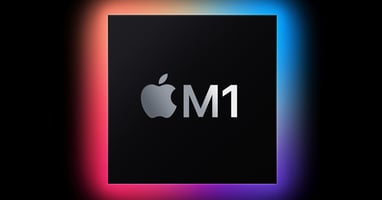ACP CreativIT is thrilled to announce its acquisition of Mindsight, a Chicago-based IT consulting...
Phone Systems: How to Decide
Phone systems (VoIP) can be daunting to evaluate. We are here to make that process simple and easy for you and your company. From the get-go, we strive to evaluate every angle of your business model to see what solution best fits you and your company’s needs. With cloud, on premise and hybrid solutions, we can assure you we have the right VoIP system for you!

A Premise-based, Cloud-based, or Hybrid System?
This is a question we often come across. Here are a few essential questions to ask yourself when evaluating premise, cloud, or hybrid:
- How much time can we spend managing the system?
- What is our budget? Is it easier to gain access to operating expenses or capital expenses at my organization?
- How much growth do we need to account for?
- How many locations do we have? Is one location substantially bigger than other locations? Do the smaller locations lack technical staff?
Want to Lower Your Monthly Phone Expense?
If you want the ability to have control over an onsite phone system and/or need flexibility to support growth without overspending, SIP trunking might be the answer you’re looking for.
SIP trunking is a way to deliver voice and media over the Internet. If your phone system or Private Branch Exchange (PBX) can connect to the Internet and use the SIP protocol to make calls over the Internet, then SIP trunking can be a means of delivering high-quality, reliable digital voice services for your business without the cost of additional hardware.
With SIP trunking, you can gain the benefits of cloud solutions while leveraging an onsite phone system. By connecting your SIP-supported PBX to a SIP trunk, you can gain on-demand scalability, improved business continuity and instant savings.
If your current business phone system uses analog technology, one phone number per phone line, this is a costly option in terms of dollars spent, physical space needed and installation time required. While digital lines offer a better alternative (1 wire/T1 = 24 channels), a T1 line can be expensive. Plus, you still need the physical space and time for your local phone company to install it. And while T1s can handle more capacity than an analog line and provide better quality over long distances, once you reach that capacity, you have to install another T1. So once again, cost and the ability to scale quickly become issues.
Many companies that switch to SIP trunking from the current solution they have saved anywhere from hundreds to thousands of dollars each month! Think of all you could do for your business cutting that much out of your monthly phone bill.
In addition to these benefits, you can also pair SIP with Unified Communications Solutions. Mitel’s SIP trunking plays nicely with a variety of onsite and cloud solutions to deliver a seamless experience that can work with your current phone system or systems you may be considering in the future.
Once you make the decision to switch to SIP trunking, the deployment can take as little as a few weeks, depending on the scope of the project. Since SIP trunking installation is handled behind the scenes primarily by your trunking provider, you will be able to get up and running without any disruption to your business.
Click here for 5 signs your business should make the move to SIP trunking.
Unified Communications as a Service & Cloud
Your phone system plays a critical role in your business operations and in your company’s success. But with more employees working from home and on the go, increasingly global markets, and ever-changing customer demands, today’s workforce requires decision makers to think beyond the traditional phone systems of days past. The modern workplace required a complete communications solution that not only lets employees interact with ease, but empowers IT teams to easily manage and adapt to an evolving business environment.
Chances are you’re already using cloud technology in other aspects of your business—G Suite by Google Cloud, Microsoft Office 365 and Dropbox are just a few examples of cloud-based applications.
The cloud simply refers to software and services that are hosted by the provider and run on the Internet instead of equipment housed in your building, giving you and your team access to documents, emails, photos and other software from anywhere, including your phone system.
There are many unique benefits to a cloud-based system versus on-premises, as seen here:
On-Premises Phone System
- You fully own and operate the solution
- You are responsible for overall maintenance, upgrades, reliability and security
- Typically acquired as an upfront purchase, and accounted for as a capital expense
Cloud Phone Service
- Applications are hosted remotely by the cloud provider or a hosting partner
- Cloud provider manages the service, relieving in-house IT or most all network-related tasks
- Services are consumed as a monthly subscription expense
Benefits of a Cloud-Based Phone System
Value
Minimal-to-no upfront expenses as this is a monthly subscription-based service
Maintenance
Cloud-based systems require minimal-to-no onsite equipment, eliminating the need for equipment that requires valuable time from IT staff and space in your building.
Accessibility
Employees have access to the same features and functionality whether they're in the main office, working from a remote location or on the road.
Integrations
Easier integrations with popular back-office cloud solutions, such as CRM, ERP and other apps, turn cloud phone systems into a communications hub that enhances productivity and collaboration.
Scalability
Adding locations, growing teams and seasonal fluctuations become simple to handle in a cloud environment, with new users able to be provisioned in minutes.
To learn more about Mitel’s Brillianty Simple Cloud Solutions, contact us today.

.png?height=200&name=Untitled%20design%20(19).png)

